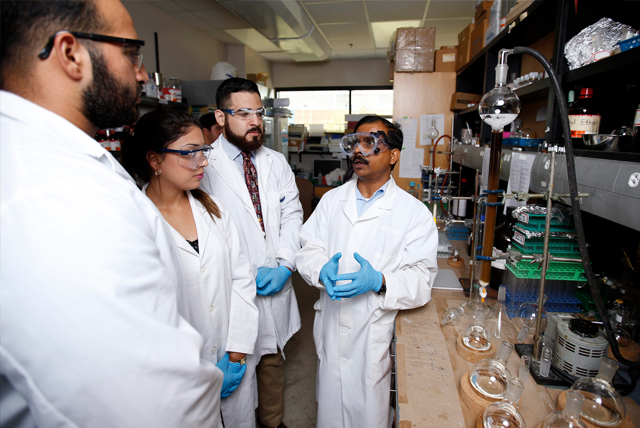Document Type
Article
Publication Date
5-25-2023
Abstract
Polyurethane is a synthetic polymer that can be fabricated into nanofibers to mimic extracellular matrix properties facilitating cell attachment and growth on the fibrous network. However, enhanced hydrophilicity and high mechanical properties may improve their use in tissue engineering, suggesting additional modifications are needed. The current work presents the fabrication of polyurethane-based bone regenerative nanofibers reinforced with TiO2-MWCNT composites and harboring Ag NPs for bacterial inhibition. The fibers possessed smooth morphology with an average size ranging from 800 to 1200nm. Techniques like SEM, FTIR, XPS, XRD, EDAX, and UV-vis spectroscopy confirmed the presence of nanofiber components like TiO2-MWCNT and Ag NPs. The Ag NPs’ release in PBS was more than 80% over 48h. The tensile strength and elastic modulus of the nanofibers ranged from 2.1 to 7.1MPa and 0.53 to 2.39MPa, respectively. The contact angle demonstrated significant improvement in the hydrophilicity of the nanofibers. These Ag-impregnated fibers controlled bacterial growth, as demonstrated by the disk diffusion and turbidity assays against E. coli and S. aureus. The MTT test revealed excellent biocompatibility against HEK 293 cells. Finally, compared to the pristine nanofibers, cell growth and attachment are considerably high in the case of modified nanofibers.
Recommended Citation
Wani, Taha Umair, et al. "Titanium dioxide functionalized multi-walled carbon nanotubes, and silver nanoparticles reinforced polyurethane nanofibers as a novel scaffold for tissue engineering applications." Journal of Industrial and Engineering Chemistry 121 (2023): 200-214. https://doi.org/10.1016/j.jiec.2023.01.024
Creative Commons License

This work is licensed under a Creative Commons Attribution-NonCommercial-No Derivative Works 4.0 International License.
Publication Title
Journal of Industrial and Engineering Chemistry
DOI
https://doi.org/10.1016/j.jiec.2023.01.024



Comments
Original published version available at https://doi.org/10.1016/j.jiec.2023.01.024